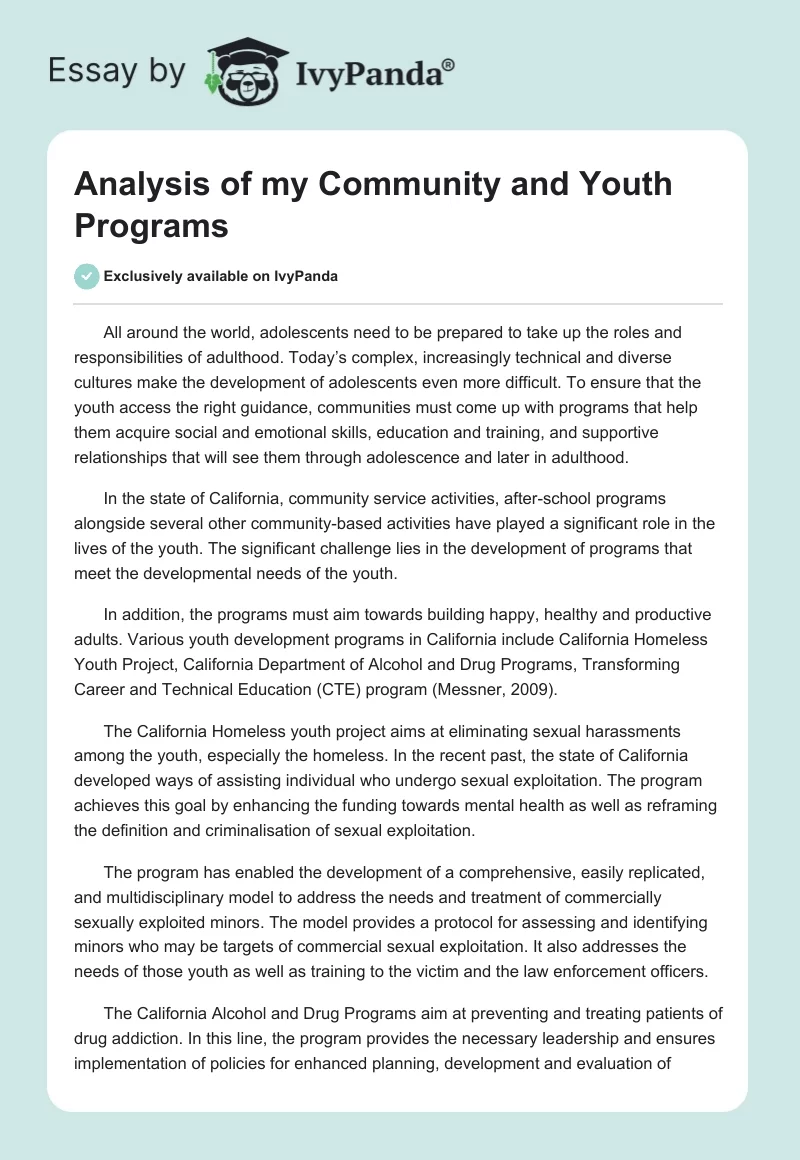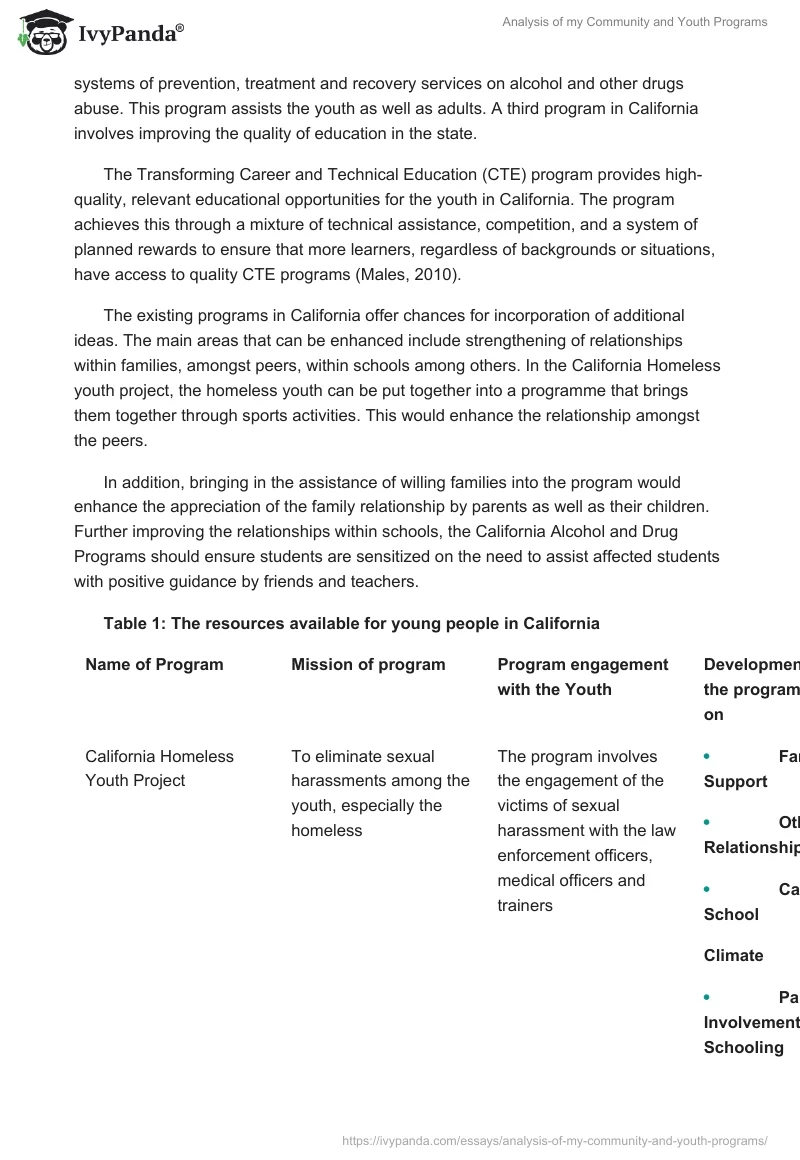All around the world, adolescents need to be prepared to take up the roles and responsibilities of adulthood. Today’s complex, increasingly technical and diverse cultures make the development of adolescents even more difficult. To ensure that the youth access the right guidance, communities must come up with programs that help them acquire social and emotional skills, education and training, and supportive relationships that will see them through adolescence and later in adulthood.
In the state of California, community service activities, after-school programs alongside several other community-based activities have played a significant role in the lives of the youth. The significant challenge lies in the development of programs that meet the developmental needs of the youth.
In addition, the programs must aim towards building happy, healthy and productive adults. Various youth development programs in California include California Homeless Youth Project, California Department of Alcohol and Drug Programs, Transforming Career and Technical Education (CTE) program (Messner, 2009).
The California Homeless youth project aims at eliminating sexual harassments among the youth, especially the homeless. In the recent past, the state of California developed ways of assisting individual who undergo sexual exploitation. The program achieves this goal by enhancing the funding towards mental health as well as reframing the definition and criminalisation of sexual exploitation.
The program has enabled the development of a comprehensive, easily replicated, and multidisciplinary model to address the needs and treatment of commercially sexually exploited minors. The model provides a protocol for assessing and identifying minors who may be targets of commercial sexual exploitation. It also addresses the needs of those youth as well as training to the victim and the law enforcement officers.
The California Alcohol and Drug Programs aim at preventing and treating patients of drug addiction. In this line, the program provides the necessary leadership and ensures implementation of policies for enhanced planning, development and evaluation of systems of prevention, treatment and recovery services on alcohol and other drugs abuse. This program assists the youth as well as adults. A third program in California involves improving the quality of education in the state.
The Transforming Career and Technical Education (CTE) program provides high-quality, relevant educational opportunities for the youth in California. The program achieves this through a mixture of technical assistance, competition, and a system of planned rewards to ensure that more learners, regardless of backgrounds or situations, have access to quality CTE programs (Males, 2010).
The existing programs in California offer chances for incorporation of additional ideas. The main areas that can be enhanced include strengthening of relationships within families, amongst peers, within schools among others. In the California Homeless youth project, the homeless youth can be put together into a programme that brings them together through sports activities. This would enhance the relationship amongst the peers.
In addition, bringing in the assistance of willing families into the program would enhance the appreciation of the family relationship by parents as well as their children. Further improving the relationships within schools, the California Alcohol and Drug Programs should ensure students are sensitized on the need to assist affected students with positive guidance by friends and teachers.
Table 1: The resources available for young people in California
References
Males, M. (2010). Teenage Sex and Pregnancy: Modern Myths, Unsexy Realities. California: ABC-CLIO. Print.
Messner, M. (2009). It’s All for the Kids: Gender, Families, and Youth Sports. California: University of California Press. Print.


